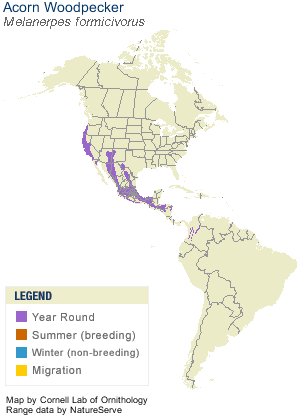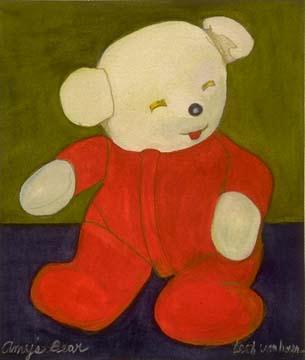I was so clueless in 1968. Still stunned by a personal debacle, I went to work, a very young 20, in a grownup world with a closely drawn reality. I bypassed most of Hippies, New Ageism, and all its fantastic possibilities. I had to admit defeat, strap on reality real fast, get out of my parent's house forever, get a job that took me far away, and just keep running.
So I missed much of the scathing political and social turmoil that was the turmoil, at the same time in a kind of denial as I worked with American soldiers traveling to Vietnam as a flight attendant for a major airline.
Pregnancies and the all-consuming attention to my children blurred most of the 70's too.
I barely remember Nixon resigning, preparing for a new baby's arrival, struggling with a marriage that was always a disaster.
It's been a project, now that I'm old, like patients who try to recover memories, to seek historical zeitgeists and attempt to relive their their seminal power. Maybe the phantom limbs I feel can be reattached somehow.
I do know historical roots grow with inexorable energy in every direction, seeking me daily.
For us all,instead of strangling history, that energy continues to open the social conflicts and divides, perhaps to exorcise the gross social injustices that exist.
At the same time, it's fascinating to see the artists' predictive capacity of the future, and how true, or not, have become their dystopian visions.
Netflix a few weeks ago, enjoying the narrative created from Philip K. Dick's novel, "Do Androds Dream of Electric Sheep?" on which the film was based.
In the novel, only a few sentient creatures of nature remain, collected the way great art is. The greatest consumer desire is to own a live animal, but Rick can only afford electric an electric one. When an unexpected bonus gives him expanded purchasing power, he buys a live creature on the installment plan, exhausting his savings, and his wife tells him he did the right thing. It's absurd, funny, and that tunnel light - it's the life force, once present, that tenaciously wills to remain, even in these darkest night of end times.
I loved the scene in "Bladerunner 2049" when K finds the body of Rachel. A small golden flower on the brown dry ground marks the place - where could it possibly have come from? (one of the many unanswered questions we wish to answer in the film, but can't).
It reminds me of the scene in "Noah" (2014) in which Russell Crowe prevents his daughter from picking a flower they've stumbled upon. What's left of nature is so precious that all must be left in place after the environmental disaster they've endured.
I am always drawn to film for depictions of godly encounters and Last Days. It's the contemporary substitute for Michelangelo's "Last Judgement". I hear the angel voices, telling me "..fall on your knees", as cinematography provides the visions that once only saints were granted, like St. Paul on the road to Damascus.
Finally, the issue of consciousness and its inalienable rights that is the heart of conflict in the Bladerunner films is actually and also the question of the "other". The other is denied as inferior, and so power is retained, the judgement rationalizing the crimes committed, the lives taken, in the taking of that position. It doesn't matter if it's the life of a flower, an animal, or a person. All have a singularity of sentience, they have being.
As Rutger Hauer dies in the first Bladerunner, it's evident that the question of his status in immaterial. He bleeds, therefore he lives.
In the novel, only a few sentient creatures of nature remain, collected the way great art is. The greatest consumer desire is to own a live animal, but Rick can only afford electric an electric one. When an unexpected bonus gives him expanded purchasing power, he buys a live creature on the installment plan, exhausting his savings, and his wife tells him he did the right thing. It's absurd, funny, and that tunnel light - it's the life force, once present, that tenaciously wills to remain, even in these darkest night of end times.
I loved the scene in "Bladerunner 2049" when K finds the body of Rachel. A small golden flower on the brown dry ground marks the place - where could it possibly have come from? (one of the many unanswered questions we wish to answer in the film, but can't).
It reminds me of the scene in "Noah" (2014) in which Russell Crowe prevents his daughter from picking a flower they've stumbled upon. What's left of nature is so precious that all must be left in place after the environmental disaster they've endured.
I am always drawn to film for depictions of godly encounters and Last Days. It's the contemporary substitute for Michelangelo's "Last Judgement". I hear the angel voices, telling me "..fall on your knees", as cinematography provides the visions that once only saints were granted, like St. Paul on the road to Damascus.
Finally, the issue of consciousness and its inalienable rights that is the heart of conflict in the Bladerunner films is actually and also the question of the "other". The other is denied as inferior, and so power is retained, the judgement rationalizing the crimes committed, the lives taken, in the taking of that position. It doesn't matter if it's the life of a flower, an animal, or a person. All have a singularity of sentience, they have being.
As Rutger Hauer dies in the first Bladerunner, it's evident that the question of his status in immaterial. He bleeds, therefore he lives.
 |
| Blade Runner 2049, the sequel |
“…the film gently expands and extends its predecessor’s inquiries into the nature of identity, personhood, and slavery”
“….a future world breathtaking in its decrepitude, a gorgeous ruin.”
Christopher Orr- The Atlantic
“…Legendary cinematographer Roger Deakins takes full advantage of its settings, highlighting the neon-lit grime and sleeker surface with texture and detail that’s begging for a more thoughtful narrative to match its considerations. The film is remarkably ambitious in all it tries to accomplish, but never quite meets its aims.”
“…When the narrative offers one of its few novel additions — a somewhat clever subversion of the Chosen One narrative…”
“…Blade Runner 2049 has the mind of science fiction, but it has the heart of a neo-noir…Like Ford, he’s a bit too humorless to fully capture the qualities that men in noir often have, but he pays homage to a genre of aching men who put on a performance of grizzled masculinity to survive the hard world they navigate”
- New York Mag, Angela Jade Bastien
“…“Blade Runner 2049” is heavy with portentous and pretentious hoo-ha. Like so many filmmakers, and not just sci-fi filmmakers, Villeneuve seems to think that “visionary” is synonymous with very slow and very monotonous. Poor Ryan Gosling, who is required to intone his lines with extreme soddenness, has to shoulder the brunt of the monotony. Peter Rainier, Christian Science Monitor
“…with a score, by Hans Zimmer and Benjamin Wallfisch that feels at times like an onslaught of monumental thuds…
Anthony Lane, New Yorker
“… electronic musical score by Benjamin Wallfisch and Hans Zimmer provides a kind of aural neon: gaunt, harsh, angular, like the noise of machinery…images are there to trigger awe or even a kind of ecstatic despair at the idea of a post-human future…It alludes to films the first Blade Runner helped inspire, such as Cameron’s The Terminator, Spielberg’s AI Artificial Intelligence, Nolan’s The Dark Knight, Andrew Stanton’s WALL-E and Spike Jonze’s Her. The references reach further back also, to the Kubrickian hotel-bar and spaceship, and to the desolate final moments of Planet of the Apes…Ridley Scott’s massively controlled andante tempo…”
Bladerunner main themes:
Poioumenon - a narrative that deals with the process of
creation and the limits of narrative truth (of memory’s truth) the post-event tests K undergoes are actually quotes (cell, interlinked) from Vladimir Nabokov’s “Pale Fire”, a short book of meta-fiction which deals with the process of creation - in one scene K comments, “I thought you hated that book”…an example of how densely the writers tried to pack the script with ideas (or overburden it?)
Poioumenon (plural: poioumena; from Ancient Greek: ποιούμενον, "product") is a term coined by Alastair Fowler to refer to a specific type of metafiction in which the story is about the process of creation. "...the poioumenon is calculated to offer opportunities to explore the boundaries of fiction and reality—the limits of narrative truth.”
Memory - reliability, importance to sense of being a whole self - of identity and connectedness
In Nabokov’s “Speak, Memory”, he reclaims and possesses his past, lost in the Russian Revolution. “… suggests that "reality" cannot be "possessed" by the reader, the "esteemed visitor”…” (Wikipedia)
The Chosen One - K believes himself to be the first ever replicant-born child of Rachel and Rick Deckard, but he discovers he is not, then sacrifices himself to re-unite Rick with his daughter - he isn’t related to anyone, his heroism is a product of his agency, his choices, the realization that human beings can choose to sacrifice themselves
robotics, slavery, IA - In Marcuse’s world, only a few individuals transcend post-industrial capitalism to become authentic creative persons - most satisfy themselves with consumption, genres, escapist philosophies (zen, running, motorcycles, collections)
heroic death - K’s death
Plot clarifications
- Ryan Gosling dies - music playing at end is from “A Time to Die” scene at end of “Bladerunner” - Rutger Hauer's poignant anguished death as Ford bends over him
- why does Wallace kill the female replicant that we see born?
- What happens to Deckard after he meets his daughter?
Why does K have a carved horse made by Rick when he wasn’t the surviving child of Rachel and Rick?
- Is Rick a replicant? RS says yes, but he’s a Nexus 7, which havenatural aging lifespans
In the final cut, the version that director Ridley Scott prefers after decades of behind-the-scenes turmoil, Deckard is about to run away with his replicant paramour Rachael (Sean Young) when he sees that his LAPD partner Gaff (Edward James Olmos) has left behind an origami unicorn. That little paper figure, seemingly representative of a unicorn that Deckard dreamt about earlier in the film, could signify that Deckard was never human.
- Is K the brother of Dr. Stelline? Is he a clone?
- Do all replicants have the same implanted memories of childhood that Dr. STelline created? Fresa/Freya helped take care of Dr. Stelline when she was born after Rachel died
- Who performed her the C-section? Sapper Morton?
What happened to Wallace’s eyes?
- What caused the Blackout?
the black out was triggered by a group of rebel Replicants who wanted to destroy the Replicant Registration database, which human supremacy groups were using to hunt them down and kill them
Why does Luv leave K behind when she captures Deckard?









































